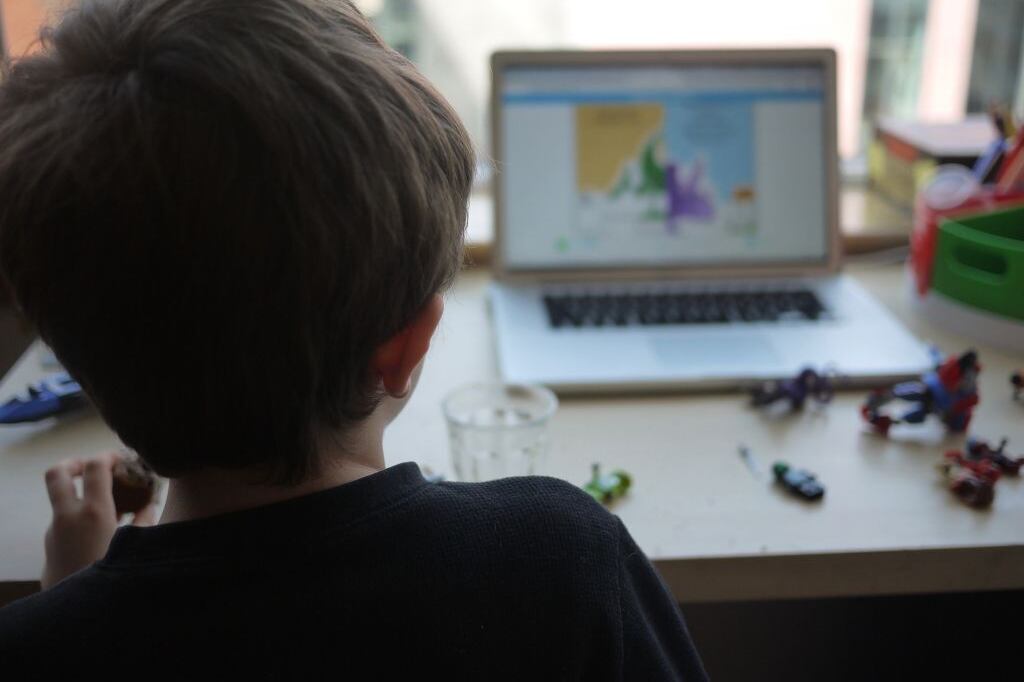When Chicago school buildings reopen this fall under the city’s tentative new plan announced Friday, families will have the option to learn remotely full-time, the district has said.
Susan Soric and her partner, Claire, plan to exercise the all-remote option for their rising first and fourth graders, she said Friday.
“We will have our struggles,” acknowledged Soric, flagging the challenges of sustaining young children’s attention on screens. Still, Soric has chronic health issues that put her at a high risk of complications if she were to contract the coronavirus.
“When I first began to realize people were talking about reopening schools, I knew that the repercussions could be so profound for my children and for me. I knew I was not going to let them congregate with other kids, no matter how careful (schools) would try to be.”
In some places, such as Rockford, district leaders say they will require families who opt out of in-person schooling to complete a medical exemption form. Chicago will not put such restrictions on the decision.
“I want to make it clear to every parent up front: There will be options for you,” Mayor Lori Lightfoot said Friday when announcing the plan.
The allowance for families to choose an all-remote schedule is a relief to some parents and children with medical complications and high-risk factors and to those who’ve expressed trepidation about sending their children back to school during the COVID-19 threat.
But it could also widen inequalities between affluent families who can afford to hire tutors or form remote learning “pods” or who can work remotely and oversee their children’s schooling and those who cannot.
Even before Chicago’s plan was announced Friday, parents were exchanging ideas about how to steer full-time remote learning on neighborhood Facebook groups, with some offering to oversee small groups in exchange for a fee.
It’s not clear yet exactly how Chicago’s all-remote option will work for the families who choose it, how those learners will be incorporated into the classroom setups, and what level of responsibility schools will have to deliver instruction to those students. The district hasn’t yet spelled out how families will register that choice. In New York City, the nation’s largest school district, parents who choose that option are asked to complete a form on a website or call a centralized number.
Soric, whose children attend Budlong on the city’s North Side, said she wants to stay enrolled at her school, and she hopes there will be virtual connections for her children. “I’d like for them to try to keep us in virtual pods so they can talk to each other. The one thing that has sustained my children is having connections to other children they can talk to online and play games with online,” she said.
She also wondered how the school, which issued her family district-owned Chromebooks, will help troubleshoot problems with the machines if they need it, and how much teachers will be available to assist those who don’t come to the building for in-person learning.
For most parents, the news of Chicago’s plan is still starting to sink in, and it will take days or weeks to make a decision. Those decisions might look different for each of Cherelle Bilal’s four children. Bilal, who lives in Bronzeville and whose children attend CICS Washington Park, a charter school, said she is more inclined to send her kindergartener to school full time: “She needs that in-person instruction.”
But she’s nervous about sending her older children, particularly a child who is on the autism spectrum. Wearing a mask all day could present issues for him, she said.
“For my child with autism to have that mask on for an 8-hour period, I wonder: Will they have breaks? Will they have fresh outside time more than once a day since they will have these masks on and have limited movement,” Bilal asked.
A grandparent has offered to help oversee schooling for the older children, so that could factor into the decision too, said Bilal, whose family helps her juggle work and child care.
Lety Patino, the mother of twin freshmen daughters in Chicago’s Hermosa neighborhood, said her family’s experience with remote learning this past spring was extremely trying. Her students did not receive computers from the district until close to the end of the school year, when they had already fallen behind; they did not get enough support and communication from their school.
Still, Patino says she is reluctant to send them to their high schools — Kelvyn Park High and Marine Leadership Academy — even two days a week. She said her daughters have medical conditions that make them more vulnerable, and in a neighborhood hard hit by the coronavirus, parent fears of a spreading infection run high. Even with a smaller number of children in each classroom, she said she doesn’t know how diligent these students’ family members are about socially distancing and other safety measures.
“I prefer that they stay at home,” Patino said in Spanish. “But we need to be much better prepared for remote learning in the fall.”
Reporting contributed by Mila Koumpilova.







